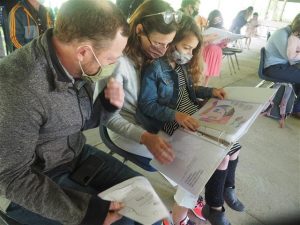When you are recite Mah Tovu, the Barechu or even the Shema, what do you think about? Do you say the words without really knowing their intention? If so, you likely have much in common with the person sitting next to you in services.
 At Mirowitz, your children learn how to pray with intention, and by first grade, they know what most prayers mean.
At Mirowitz, your children learn how to pray with intention, and by first grade, they know what most prayers mean.
When they sing Mi Chamocha, they think about freedom and the responsibilities of being free.
When they say the Mah Tovu, they think about ways they can turn around the unkind words on their own lips and make them into a blessing just as Balaam did in the Torah (Numbers 24).
They chant the Avot V’Imahot and know that each person has a special relationship with God, just as our ancestors did thousands of years go.
This week, first graders finished their siddurim (prayerbooks), and an eight month study of prayer…and their joy was magnified by the presence of their parents at a special Siddur Ceremony in the pavilion. Each siddur includes stunning illustrations that not only reflect creativity and imagination, but also will serve as a visual image of the meaning behind each prayer, an image that will be forever implanted in their minds as they pray in any synagogue, in any city, in any country. Their siddurim will be an integral part of their childhood and the education will last a lifetime.

Kol Hakavod to Morah Leiba and Morah Sagit for filling this in person year with joyful Jewish learning, to Morah Betti teaching songs that made the ceremony meaningful, and to every student and parent who rejoiced at the ceremony this morning.
May you always find meaning in your heritage.
Shabbat Shalom,
Morah Cheryl

